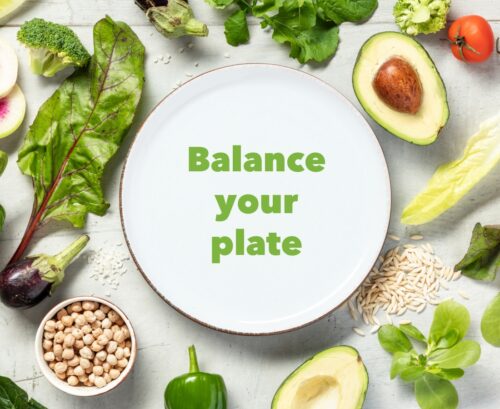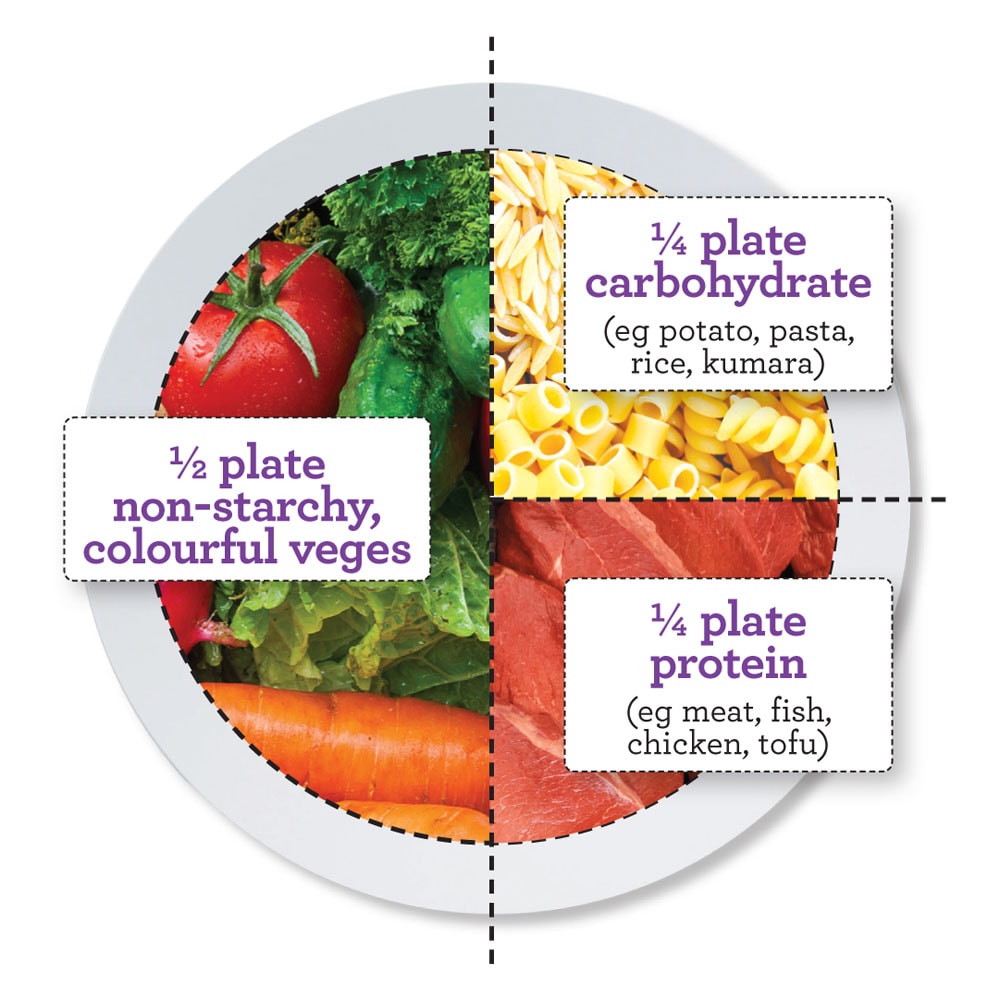
If you have recently been diagnosed with type 2 diabetes, it is important to make some changes to your diet to manage your condition effectively. A healthy, balanced diet can help keep your blood sugar levels under control, reduce your risk of complications, and improve your overall health and well-being. This step-by-step guide will help you build diabetes-friendly meals that are rich in nutrients and low in sugar and unhealthy fats.
So what does a healthy plate look like?

1. Start by mentally dividing your plate into quarters
One quarter will contain protein foods, another quarter will contain low to medium-GI carbohydrate foods, and the rest of your plate (the final half) will be filled with vegetables and/or salad. This will help you get the right balance for your meal and help with portion sizes. Remember, smaller plates make smaller portion sizes.
2. Give vegetables a leading role
Aim for at least two (ideally three) servings of non-starchy vegetables in your meal. One serving is equivalent to half a cup of cooked vegetables or 1 cup of salad. Add grated vegetables to sauces, soups and baked dishes, or make vegetables the star of your meals rather than a side dish.
Per person:
- 1 cup* cooked non-starchy vegetables like broccoli, cauliflower, carrot, etc
- 2 cups* salad such as lettuce, spinach, tomato, capsicum, etc
*These quantities are the minimum goal – feel free to load up your plate.
3. Add a portion of lean protein
Protein is important because it helps you feel full for longer. Always choose reduced-fat dairy products and lean meat, and remove all visible fat prior to cooking.
Per person:
- 2 small (45g) eggs
- 120g tofu
- ½ cup cooked lentils, chickpeas, or 3-bean mix
- 100g cooked skinless chicken (125g raw)
- 120g cooked fish (170g raw), including canned tuna, salmon, and mackerel
- 100g cooked lean beef, lamb, or pork (125g raw)
- 40g (about 2 slices) reduced-fat cheese
4. Choose moderate amounts of high-quality carbohydrates
Keep the glycaemic load of your meal down by choosing smaller portions of starchy vegetables.
Using low to moderate-GI carbohydrate foods will help keep the overall GI of the meal low. Choose pasta, noodles, basmati rice, pearl barley, quinoa, grainy breads, and legumes. Legumes contain low-GI carbohydrates as well as protein.
Per person:
- 1 cup cooked pasta or noodles, preferably wholemeal
- 1 small wholegrain bread roll
- 2 slices wholegrain bread
- 1 cup cooked couscous
- ¾ cup cooked brown rice or basmati rice
- ¾ cup quinoa
- 1 cooked small potato
- 1 cooked medium kumara
- 1 medium corn cob
5. Add a little healthy fat
Good fats help lower the GI of the overall meal and are important for keeping cholesterol levels in check. Aim for small quantities of healthy fats such as olive oil, avocado, and nuts or seeds.
Adding fat is not always necessary as many sources of protein, such as meat and tofu, can provide ample fat.
Per person:
- 2 teaspoons pesto
- 1 teaspoon plant-based oil (eg, extra virgin olive oil)
- 2 teaspoons crushed or sliced nuts
- 2 teaspoons avocado
- 1 tablespoon hummus
- 2 teaspoons salad dressing
www.healthyfood.com










